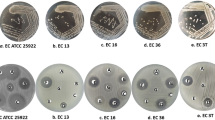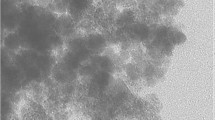Abstract
The spread and development of antibiotic resistance globally have led to severe public health problems. It has been shown that some non-antibiotic substances can also promote the diffusion and spread of antibiotic resistance genes (ARGs). Nanofullerene (nC60) is a type of nanomaterial widely used around the world, and some studies have discovered both the biological toxicity and environmental toxicity of nC60. In this study, cellular and molecular biology techniques were employed to investigate the influences of nC60 at sub-minimum inhibitory concentrations (sub-MICs) on the conjugation of ARGs between the E. coli strains. Compared with the control group, nC60 significantly increased the conjugation rates of ARGs by 1.32–10.82 folds within the concentration range of 7.03–1800 µg/L. This study further explored the mechanism of this phenomenon, finding that sub-MICs of nC60 could induce the production of reactive oxygen species (ROS), trigger SOS-response and oxidative stress, affect the expression of outer membrane proteins (OMPs) genes, increase membrane permeability, and thus promote the occurrence of conjugation. This research enriches our understanding of the environmental toxicity of nC60, raises our risk awareness toward nC60, and may promote the more rational employment of nC60 materials.

Similar content being viewed by others
References
Alargova R G, Deguchi S, Tsujii K (2001). Stable colloidal dispersions of fullerenes in polar organic solvents. Journal of the American Chemical Society, 123(43): 10460–10467
Andersson D I, Hughes D (2010). Antibiotic resistance and its cost: Is it possible to reverse resistance? Nature Reviews. Microbiology, 8(4): 260–271
Andersson D I, Hughes D (2014). Microbiological effects of sublethal levels of antibiotics. Nature Reviews. Microbiology, 12(7): 465–478
Andrievsky G V, Klochkov V K, Karyakina E L, Mchedlov-Petrossyan N O (1999). Studies of aqueous colloidal solutions of fullerene C60 by electron microscopy. Chemical Physics Letters, 300(3–4): 392–396
Bezzu C G, Burt L A, Mcmonagle C J, Moggach S A, Kariuki B M, Allan D R, Warren M, Mckeown N B (2019). Highly stable fullerene-based porous molecular crystals with open metal sites. Nature Materials, 18(7): 740–745
Castro E, Hernandez Garcia A, Zavala G, Echegoyen L (2017). Fullerenes in biology and medicine. Journal of Materials Chemistry B, 5(32): 6523–6535
Ding C, Pan J, Jin M, Yang D, Shen Z, Wang J, Zhang B, Liu W, Fu J, Guo X, Wang D, Chen Z, Yin J, Qiu Z, Li J (2016). Enhanced uptake of antibiotic resistance genes in the presence of nanoalumina. Nanotoxicology, 10(8): 1051–1060
Eisenbrandt R, Kalkum M, Lurz R, Lanka E (2000). Maturation of IncP Pilin precursors resembles the catalytic dyad-like mechanism of leader peptidases. Journal of Bacteriology, 182(23): 6751–6761
Farré M, Pérez S, Gajda-Schrantz K, Osorio V, Kantiani L, Ginebreda A, Barceló D (2010). First determination of C60 and C70 fullerenes and N-methylfulleropyrrolidine C60 on the suspended material of wastewater effluents by liquid chromatography hybrid quadrupole linear ion trap tandem mass spectrometry. Journal of Hydrology (Amsterdam), 383(1–2): 44–51
Han S, Lemire J, Appanna V P, Auger C, Castonguay Z, Appanna V D (2013). How aluminum, an intracellular ROS generator promotes hepatic and neurological diseases: the metabolic tale. Cell Biology and Toxicology, 29(2): 75–84
Imlay J A (2003). Pathways of oxidative damage. Annual Review of Microbiology, 57(1): 395–418
Kabir M M, Shimizu K (2006). Investigation into the effect of soxR and soxS genes deletion on the central metabolism of Escherichia coli based on gene expressions and enzyme activities. Biochemical Engineering Journal, 30(1): 39–47
Koebnik R, Locher K P, Van Gelder P (2000). Structure and function of bacterial outer membrane proteins: barrels in a nutshell. Molecular Microbiology, 37(2): 239–253
Kostelidou K, Jones A C, Thomas C M (1999). Conserved C-terminal region of global repressor korA of broad-host-range plasmid RK2 is required for co-operativity between korA and a second RK2 global regulator, korB. Journal of Molecular Biology, 289(2): 0–221
Lyon D Y, Fortner J D, Sayes C M, Colvin V L, Hughes J B (2005). Bacterial cell association and antimicrobial activity of a C60 water suspension. Environmental Toxicology and Chemistry, 24(11): 2757–2762
Nel A E, Madler L, Velegol D, Xia T, Hoek E M, Somasundaran P, Klaessig F, Castranova V, Thompson M (2009). Understanding biophysicochemical interactions at the nano-bio interface. Nature Materials, 8(7): 543–557
Nguyen C C, Hugie C N, Kile M L, Navab-Daneshmand T (2019). Association between heavy metals and antibiotic-resistant human pathogens in environmental reservoirs: A review. Frontiers of Environmental Science & Engineering, 13(3): 46
Qiu Z, Yu Y, Chen Z, Jin M, Yang D, Zhao Z, Wang J, Shen Z, Wang X, Qian D, Huang A, Zhang B, Li J W (2012). Nanoalumina promotes the horizontal transfer of multiresistance genes mediated by plasmids across genera. Proceedings of the National Academy of Sciences of the United States of America, 109(13): 4944–4949
Sakai H, Komano T (1996). DNA replication of IncQ broad-host-range plasmids in gram-negative bacteria. Bioscience, Biotechnology, and Biochemistry, 60(3): 377–382
Schröder G, Lanka E (2005). The mating pair formation system of conjugative plasmids-A versatile secretion machinery for transfer of proteins and DNA. Plasmid, 54(1): 1–25
Tan Z, Zhang D, Tian H R, Wu Q, Hou S, Pi J, Sadeghi H, Tang Z, Yang Y, Liu J, Tan Y Z, Chen Z B, Shi J, Xiao Z, Lambert C, Xie S Y, Hong W (2019). Atomically defined angstrom-scale all-carbon junctions. Nature Communications, 10(1): 1748
Thauvin C, Rickling S, Schultz P, Celia H, Meunier S, Mioskowski C (2008). Carbon nanotubes as templates for polymerized lipid assemblies. Nature Nanotechnology, 3(12): 743–748
Thomas C M, Nielsen K M (2005). Mechanisms of, and barriers to, horizontal gene transfer between bacteria. Nature Reviews. Microbiology, 3(9): 711–721
UNEP (2017). Frontiers 2017: Emerging Issues of Environmental Concern. Geneva: United Nations Environment Programme
Vikesland P, Garner E, Gupta S, Kang S, Maile-Moskowitz A, Zhu N (2019). Differential drivers of antimicrobial resistance across the world. Accounts of Chemical Research, 52(4): 916–924
Wang Y, Lu J, Mao L, Li J, Yuan Z, Bond P L, Guo J (2019). Antiepileptic drug carbamazepine promotes horizontal transfer of plasmid-borne multi-antibiotic resistance genes within and across bacterial genera. ISME Journal, 13(2): 509–522
WHO (2017). Global Health Case Challenge: fighting antibiotic resistance. Geneva: World Health Organization
Yin L, Zhou H, Lian L, Yan S, Song W (2016). Effects of C60 on the photochemical formation of reactive oxygen species from natural organic matter. Environmental Science & Technology, 50(21): 11742–11751
Yu Y, Zhu X, Wu G, Wang C, Yuan X (2019). Analysis of antibiotic resistance of Escherichia coli isolated from the Yitong River in North-east China. Frontiers of Environmental Science & Engineering, 13(3): 39
Zhang S, Wang Y, Song H, Lu J, Yuan Z, Guo J (2019). Copper nanoparticles and copper ions promote horizontal transfer of plasmid-mediated multi-antibiotic resistance genes across bacterial genera. Environment International, 129: 478–487
Zhang Y, Gu A Z, Cen T, Li X, Li D, Chen J (2018). Petrol and diesel exhaust particles accelerate the horizontal transfer of plasmid-mediated antimicrobial resistance genes. Environment International, 114: 280–287
Zhang Y, Gu A Z, He M, Li D, Chen J (2017). Subinhibitory concentrations of disinfectants promote the horizontal transfer of multidrug resistance genes within and across genera. Environmental Science & Technology, 51(1): 570–580
Acknowledgements
This work was supported by grants from the National Natural Science Foundation of China (Grant Nos. 91843301, 21527814 and 91643106).
Author information
Authors and Affiliations
Corresponding authors
Additional information
Highlights
• Sub-inhibitory levels of nC60 promote conjugative transfer of ARGs.
• nC60 can induce ROS generation, oxidative stress and SOS response.
• nC60 can increase cell membrane permeability and alter gene expression.
• Results provide evidence of nC60 promoting antibiotic resistance dissemination.
Electronic supplementary material
Rights and permissions
About this article
Cite this article
Ji, Q., Zhang, C. & Li, D. Influences and mechanisms of nanofullerene on the horizontal transfer of plasmid-encoded antibiotic resistance genes between E. coli strains. Front. Environ. Sci. Eng. 14, 108 (2020). https://doi.org/10.1007/s11783-020-1287-0
Received:
Revised:
Accepted:
Published:
DOI: https://doi.org/10.1007/s11783-020-1287-0




